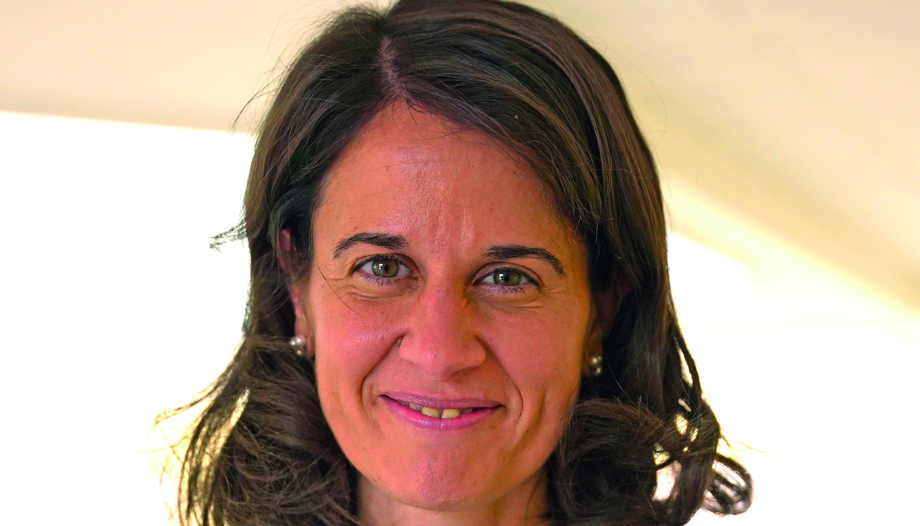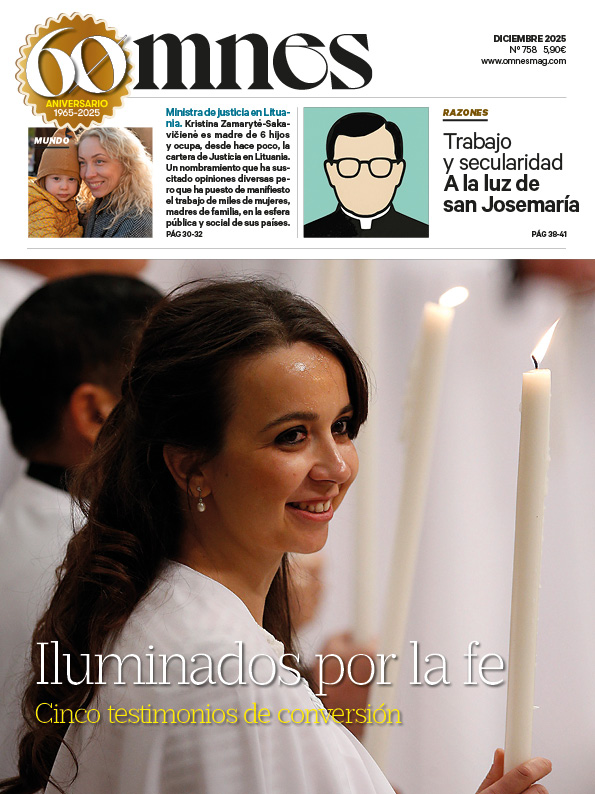Marta Rodríguez Díaz holds a PhD in Philosophy from the Pontifical Gregorian University. This native of Madrid is a professor in the Faculty of Philosophy at the Pontifical Athenaeum Regina Apostolorum. There she coordinates the academic area of the Institute of Women's Studies. A specialist in women's and gender issues, her doctorate, focused on the philosophical roots of gender theories, won the Bellarmine Prize 2022 for the best doctoral thesis at the Gregorian University. Marta Rodriguez was also head of the Dicastery for Laity, Family and Life.
First of all, why is there still a "theme" around women in the Church?
-In fact, figures like St. Hildegard of Bingen or St. Teresa of Jesus were already "protesting" against the way in which men of the Church conceived women. A more immediate origin can be found in the 20th century. In the middle of the century, several factors converged: on the one hand, the sexual revolution and the 1968 movement caused a kind of fracture between women and the Church, which led to a cooling and even a certain distancing of many from the ecclesial institution. On the other hand, there is an awareness, also within the Church, that the presence of women in public life is a "sign of the times" (as defined for the first time by John XXIII).
The Council matured the theological bases for a full insertion of women in the Church, as subjects of rights and duties... but the assimilation of this novelty has been slow.
The post-conciliar Magisterium has continued along this line, but as St. John Paul II said in "Christifidelis Laici"49 it is necessary to move from theoretical recognition of women's dignity to practical realizations. In short, this century has witnessed a major change in the way women are conceived and positioned in society. The Church could not remain oblivious to these transformations, and has had (and must continue to have) an analogous path of assimilation and transformation.
In a world where the concept of woman seems to have been diluted, how do we define woman?
-A woman is a human person of female sex. Sex is not an accidental, accessory aspect... sex touches and permeates all the dimensions of the person: body and soul. According to John Paul II, the person is not sexed because of the sexed body, but it is in the body that this difference is most clearly manifested, but it has a deeper root. In the end, male and female are two distinct and complementary ways of being the image and likeness of God.
As far as culture is concerned, in the human being it is not possible to distinguish between nature and culture. That is to say: it is a legitimate distinction, but it is a distinction of reason. In reality, nature and culture are always fused. The nature of the human being is to be cultural. Therefore, being a woman is a natural and cultural fact at the same time.
You have known the cultural and social differences around the world. How do you understand the task of women in different places where the Church is present?
-Phew! That's a difficult question. Simplifying things a lot, we could say that the visions move between two poles: one that conceives the task of women as a subsidiary and second-level activity, and another that understands the protagonism that they are called to exercise today.
The difference between one pole and the other lies in a different anthropological and ecclesiological conception. Those who are on the side of protagonism start from an idea of complementarity between man and woman, where both are equal in dignity and different. For this reason they need each other: not only in the order of doing, but also in the order of being. And not because they are incomplete, but because only in the reciprocal encounter they reach their fullness as persons.
The vision of the Church that sustains the protagonism is not that of a democracy governed by quotas, but that of the Church as a mystery of communion, synodal, where all vocations are important, and the ministries are at the service of the People of God.
On the other hand, in places where the task of women is conceived in a more reductive way, the starting point is an idea of anthropological submission of women to men, and a clericalist idea of the Church.
There is a kind of identification of power and the sacrament of Holy Orders whereby, without access to priestly orders, there is no "equality" for women in the Church Is this real?
-First of all, it must be understood that, in the Church, the ministry is always an authority that is received for service, not as a personal dignity, or a dominion.
In the case of women, the Evangelii Gaudium n. 104 gives a very important clue. He says that the legitimate claims of women raise questions for the Church that cannot be easily evaded. And he says: the point is to separate power in the Church from the presbyteral ministry. That is to say: the sacrament of Holy Orders is necessarily linked to an authority, but this is not the only source of potestas (power) within the Church.
The sacrament of baptism is in itself a configuration with Christ, and by virtue of it, the Church can also grant authority to the laity so that they can exercise it at the service of the People of God. This is a theme that has been worked on in recent years, also at the level of canon law. And it seems to me that the path the Church is taking by placing synodality at the center of reflection is a way of overcoming a clerical conception of the Church. This should in no way undermine the dignity of the priest (I can personally say that I am a lover of the ministerial priesthood!), but rather place him within the Body from which and to which he has been called.
Is there a ceiling, no longer of glass but of concrete, for women in the Church?
-I don't think there is at the theological or even canonical level, but there is, especially in some contexts, at the cultural level. This is what I was saying before about "Christifidelis Laici". There are many things that could be done and are not done because of a question of mentality.
It seems to me that Pope Francis is wanting to give signs of change in this regard, and the idea would be for bishops' conferences and dioceses to follow in his footsteps: appointing women to positions of responsibility, placing them on councils, etc.
What, then, does woman bring in an original way to the task of the Church in the world?
-If we believe that sex is really something that touches the whole person, then we understand that men and women have a different relational modality, a way of reasoning, relating, and acting, which has different tonalities.
A world thought and made only by men is very poor, as is a world made only by women. We need the other perspective, which completes, corrects, modulates.
In addition to complementary work in all fields, women in the Church are called to awaken their feminine, spousal and maternal face.
Women have to help the Church to understand herself more fully, and that happens through, as Pope Francis says, "to think the Church with feminine categories". Olé! I believe that this opens a prophetic path that we have to explore.
What is the path for women as believers?
-In a few words: to incarnate a luminous femininity, from which to open prophetic paths for the Church that respond to the signs of the times today.







